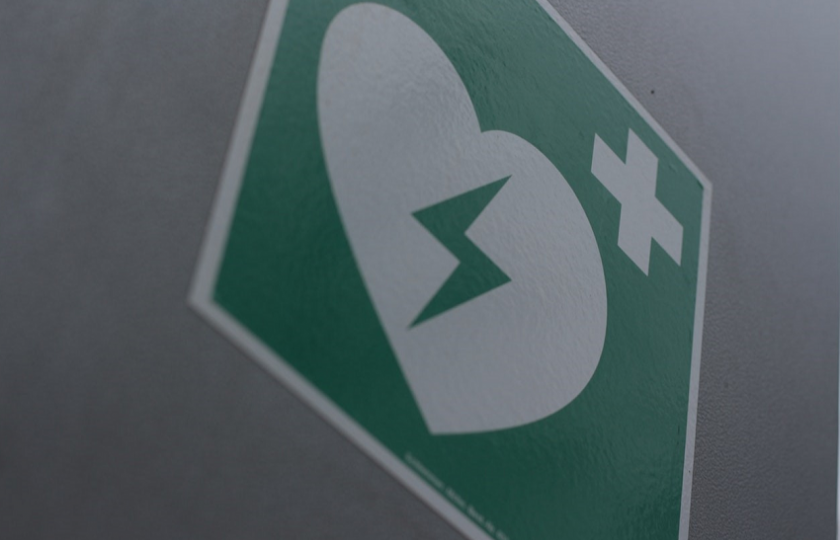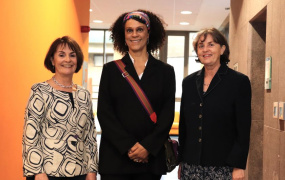Health & Safety Office
About
The Health and Safety Office of Mary Immaculate College provides advice and assistance on all aspects of Safety, Health and Welfare at work to the College, in accordance with the Safety, Health and Welfare at Work Act, 2005 and other relevant legislation.
It is the policy of the College, in so far as is reasonably practicable, to ensure the health and safety of employees, students, contractors and of any persons who may be affected by the operations of the College.
Mary Immaculate College through Health & Safety is a member of the National Irish Safety Organisation (NISO).
The Health and Safety Office is located in Room C103, situated on the first floor of Áras McAuley.
For Health & Safety queries, email: Safety@mic.ul.ie
Staff
Accident Reporting, Fire Safety & Emergencies
All employees, students and persons using the facilities in Mary Immaculate College have a responsibility to familiarise themselves with the following information regarding fire safety.
You should pay attention to the location of fire exits, fire extinguishers, the fire alarm and assembly points in their building. Fire and emergency drills are held in the College on a regular basis in order to familiarise employees and students with an emergency and the procedures to be followed during evacuation.
MIC has developed fire and emergency plans to ensure that all buildings are evacuated in an orderly and controlled manner during an emergency situation thereby minimising potential injury to employees, students, visitors, and contractors.
On the Discovery of a Fire
- On discovering a fire; raise the alarm by breaking the nearest available break glass point Unit IMMEDIATELY
- Dial 999 to call the fire brigade, Dial 112 on mobile phones & call reception on Ext 0 or 4997 to summon the CIRT team. Provide details to fire brigade & reception of exact location and extent of fire
- Evacuate the building by the nearest exit route
- Close all doors after you
- Comply with all directions given by Fire Wardens
- Proceed to the assembly point
- Do not use the lift
- Do not re-enter the building until the 'all-clear' has been given either by the evacuation control team or the fire brigade officer in charge
On Hearing the Fire Alarm
- Evacuate the building by the nearest exit route
- Close all doors after you
- Comply with all directions given by Fire Wardens
- Proceed to the assembly point
- Do not delay to collect personal belongings
- Do not use the lift
- Do not re-enter the building until the 'all-clear' has been given either by the Health and Safety Manager or Evacuation Coordinator
Emergency Evacuation Chairs
Evacuation chairs have been installed in a number of buildings to assist persons to evacuate quickly and safely in the event of an emergency. In the event of an evacuation, all security doors automatically release. Persons such as wheelchair users can be evacuated using Evacuation chairs (by consent) which are located in the main buildings.
There are currently fifteen employees trained in the use of the Evacuation Chairs to assist persons in an appropriate and sensitive manner. Evacuation chairs can provide a fast, safe, reliable means of evacuation. They can also provide people with walking disabilities an equal opportunity for escape in an emergency.
All accidents, near misses and incidents involving employees, students, contractors and visitors must be notified to the Health and Safety office on the day of the occurrence or as soon as is practicable thereafter using an official accident report form. The details of the accident, the person involved, what work was going on, etc. are all filled in giving as much explanation as possible as to the cause of the accident.
All employees are required to report accidents, dangerous occurrences and ‘near-miss situations’ that they are involved in to their immediate supervisor or Head of Department.
- Accident: An accident can be described as an unplanned event or action that results in undesired consequences, e.g. injury, ill health, damage to the environment, damage to or loss of property, plant and materials
- Incident: An incident is the sequence of events or actions that produces that accident. All accidents are incidents. However the definition of an incident is wider in that it also includes dangerous occurrences and near misses.
- A near miss is an unplanned event that did not result in injury, illness, or damage - but had the potential to do so. Only a fortunate break in the chain of events prevented an injury, fatality or damage.
Accident Report Form and Witness Report Form are available from Reception Areas or the Health and Safety Office, or click to download below:
Automated External Defibrillators (AEDs) are available at a number of locations on the Mary Immaculate College campus; see list see list of AED locations here.
The AED will make early defibrillation available to employees, students, visitors, contractors etc. who experience sudden cardiac arrest. The AED can only be used by trained personnel.

There are First Aid & burn treatment kits at a number of locations on the Mary Immaculate College campus; First Aid locations available here
Safety Policies & Guidelines
The Mary Immaculate College Safety Statement has been prepared in recognition of the College's health and safety statutory duties and responsibilities, such as the Safety, Health & Welfare at Work Act 2005, and the Safety, Health & Welfare (General Application) Regulations, 2007. The Safety Statement is the College's policy, in writing, for safeguarding and maintaining health and safety standards and it specifies the manner to be adopted, organisation and resources provided for that purpose.
This safety statement is aimed at providing a framework for protecting the College Community from accidents, potential injury and ill health arising from the College’s work activities.
The Safety Statements for the MIC Limerick campus, MIC Thurles campus and MIC Courtbrack accommodation is available to all employees, students, contactors and visitors. The documents can be viewed at the following links below:
Events organised by both internal and external persons taking place on campus are subject to risk assessments.
Health & Safety Forms
First Aid and AED
The Key role of the MIC AED Scheme is to assist in the case of an on-site suspected cardiac arrest amongst students, staff and visitors.
Automatic External Defibrillators (AEDs) are available at MIC Limerick. The AED will make early defibrillation available to staff, students, visitors, contractors etc. who experience sudden cardiac arrest. The AED is very user friendly and can only be used by trained personnel. An Automated External Defibrillator (AED) is used to treat victims of sudden cardiac arrest.
MIC Limerick Campus AED Locations:
- Main Reception, Foundation Building
- RHS - Entrance to Library, outside ladies toilet, Library Building
- 3rd Floor, Outside Medical Centre, TARA Building
- Ground Floor, MISU, TARA Building
- 1st Floor, Outside Reception, Tailteann
- Ground Floor, Foyer, Tailteann
- Ground Floor, Foyer, JHN
- Ground Floor, Foyer, Courtbrack Accommodation
MIC Thurles Campus AED Locations:
- Ground Floor, Entrance foyer, Main Building
- Ground Floor, Outside Security Office, Main Building
Please click the link to view the Automated External Defibrillator (AED) - Inspection Record
Health and Safety Committee
MIC recognises the importance of communication and consultation in relation to health and safety to promote a collaborative and positive environment for all on campus. To ensure an effective process is in place for this a Health and Safety Committee has been established. The Health and Safety Committee is an advisory and consultative body, providing the President, Senior Management Team, the Health and Safety Manager and the campus community with a forum and mechanism for two-way discussion, enabling good health and safety management practices to be embedded as part of the day to day life of the college.
Membership includes:
- Director of Human Resources
- Health and Safety Manager
- Director of Estates and Sustainability
- Students Union Manager
- Students Union President
- Two members of the Academic Staff*
- Two members of the Professional Services Staff*
- College Nurse
Note: Two members of these groups combined, denoted by * will perform the role of Safety Representative.
The Health and Safety Committee meets four times a year to review College health and safety related matters
Health and Safety Training
The College is committed to providing appropriate training for all employees so that they have the necessary skills and knowledge to organise and perform their core role or additional roles (e.g. First Aid Responder, Fire Warden etc.) safely. On commencement of employment with Mary Immaculate College, employees receive Health and Safety Induction training.
The College expects all employees to attend all training as scheduled. The Annual Training Needs Analysis identifies key training requirements for the year and includes topics required by legislation and those arising from risk assessments. Examples of health and safety training at Mary Immaculate College include:
- Health & Safety Induction Training
- First aid PHECC (FAR) First Aid Response
- Fire Warden Training
- Fire Safety and the Fire Drill
- Manual handling and follow up refresher courses
- AED (Automatic External Defibrillator) Training
- Evacuation Chair Training
- Construction Safe Pass Training
- Engineering Safety methods
- Safe use of machinery
- Use of personal protective equipment (PPE)
- Dealing with Bullying, Harassment and Stress in the Workplace
- Safety Representative and Manager/Supervisor Training in Health and Safety
- Safe use of Display Screen Equipment
- About
- Staff
- Accident Reporting, Fire Safety & Emergencies
- Safety Policies & Guidelines
- Health & Safety Forms
- First Aid and AED
- Health and Safety Committee
- Health and Safety Training







